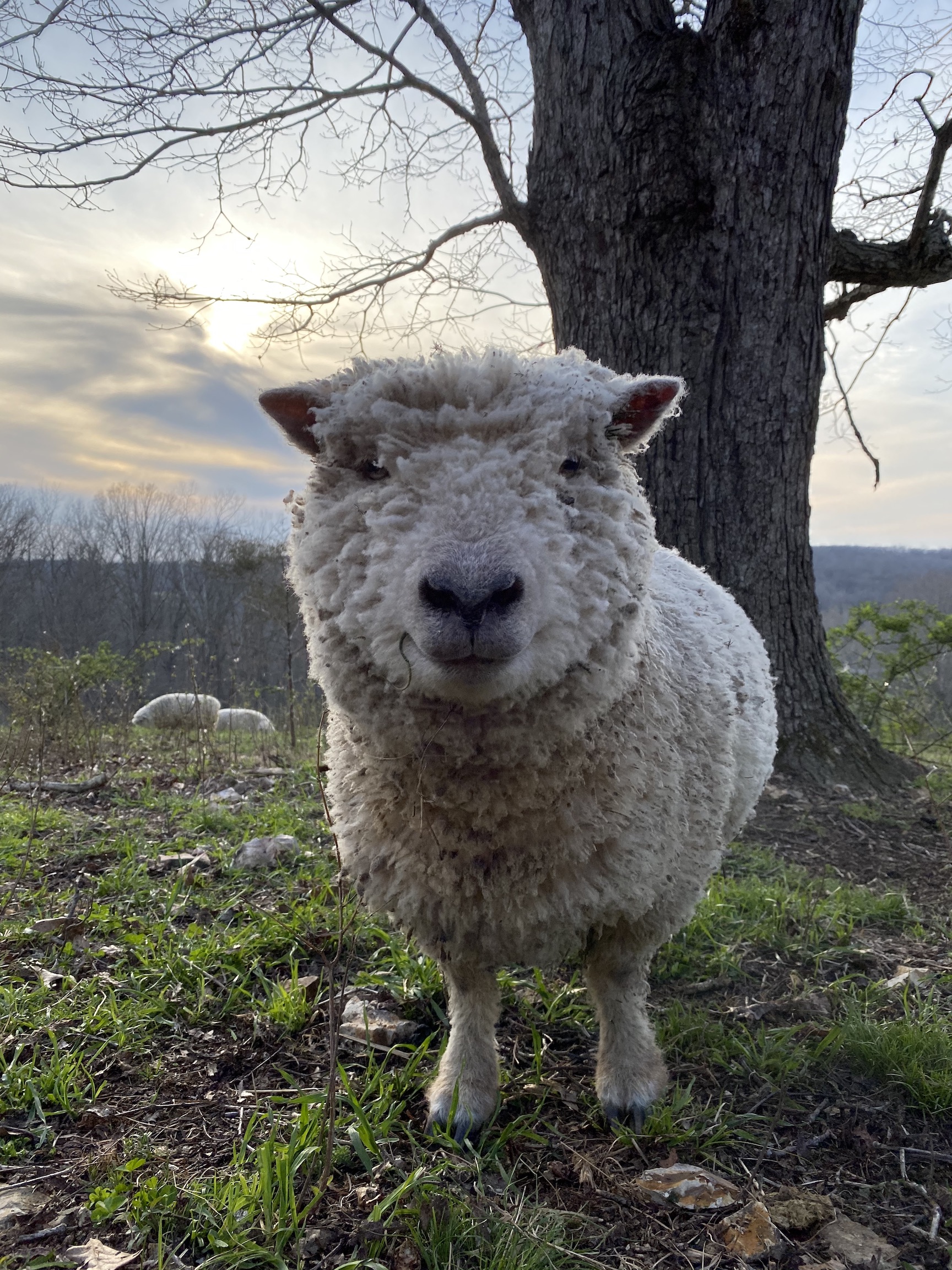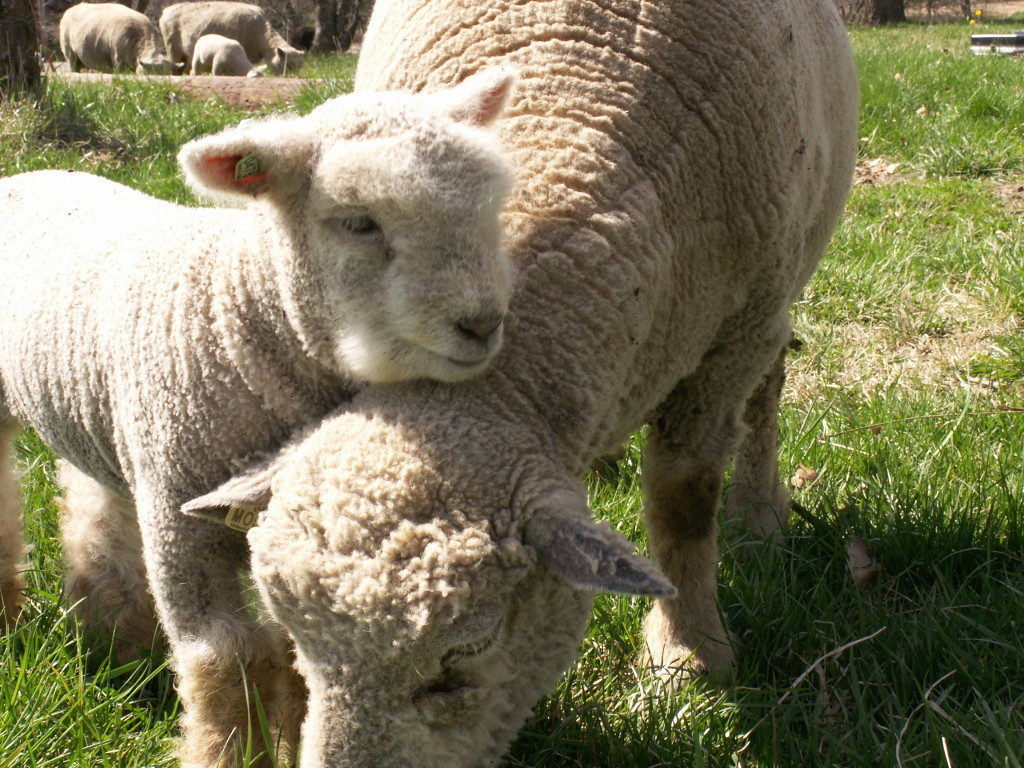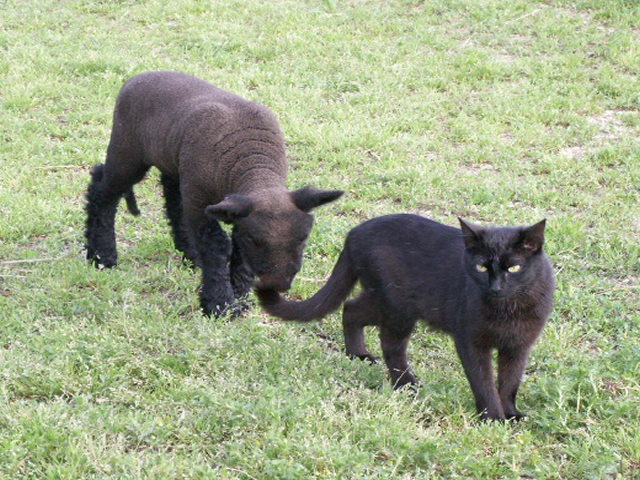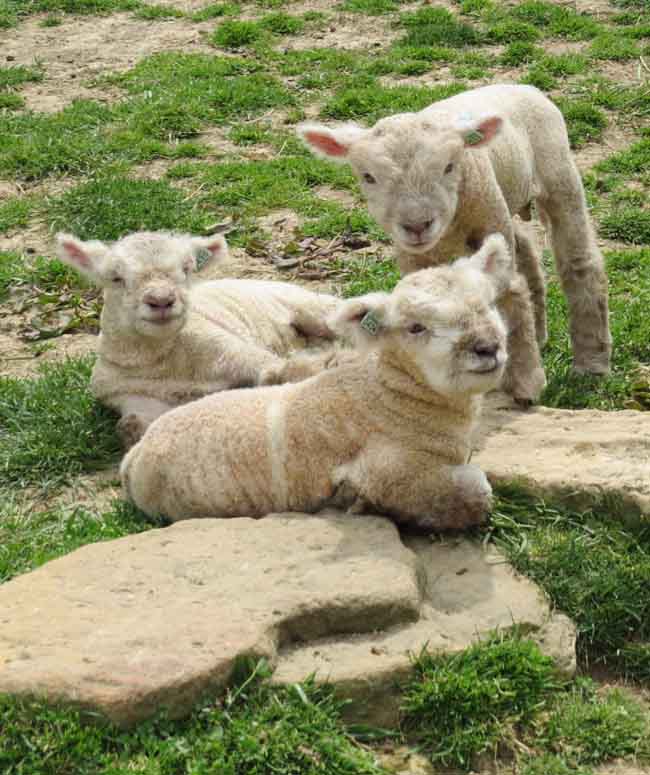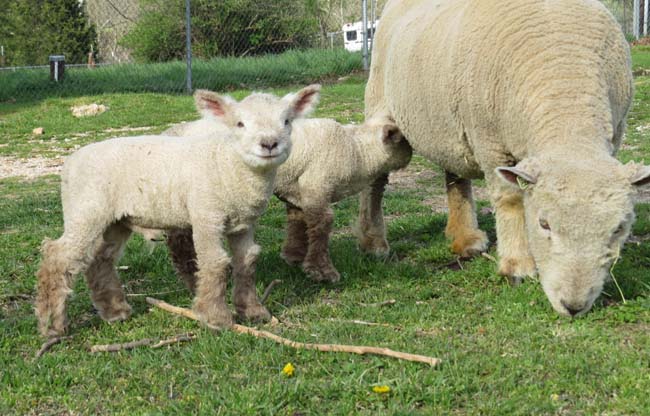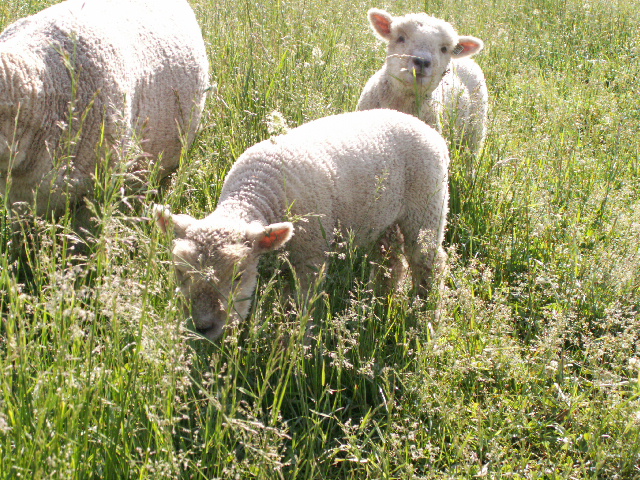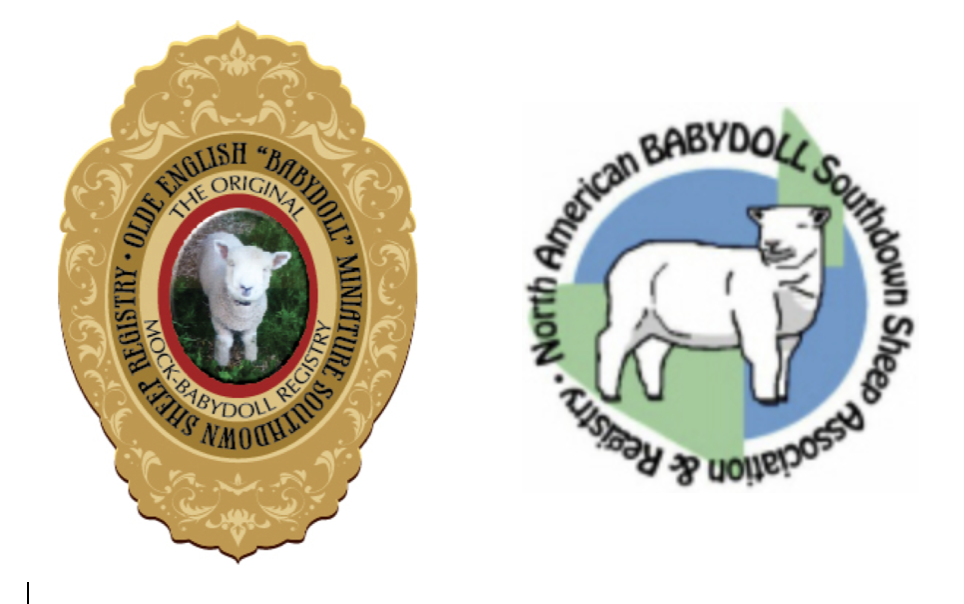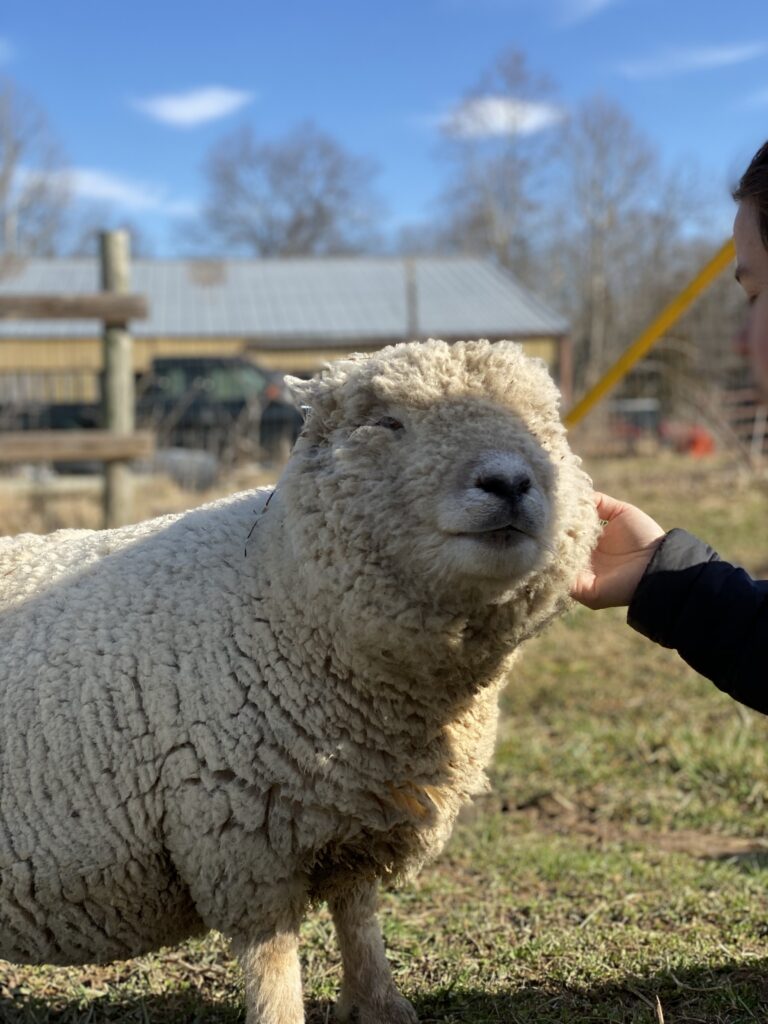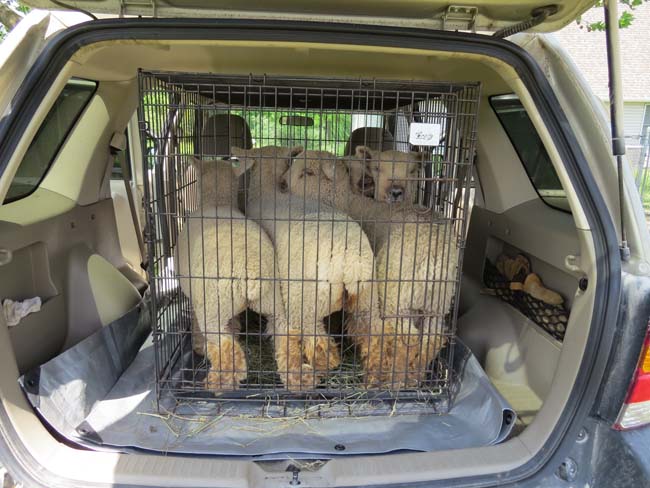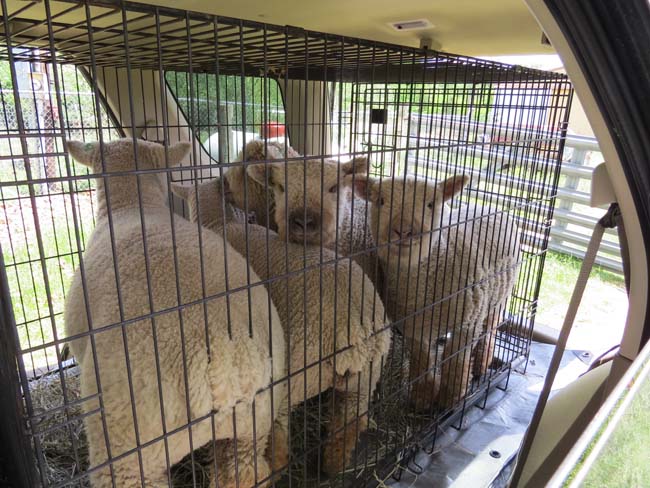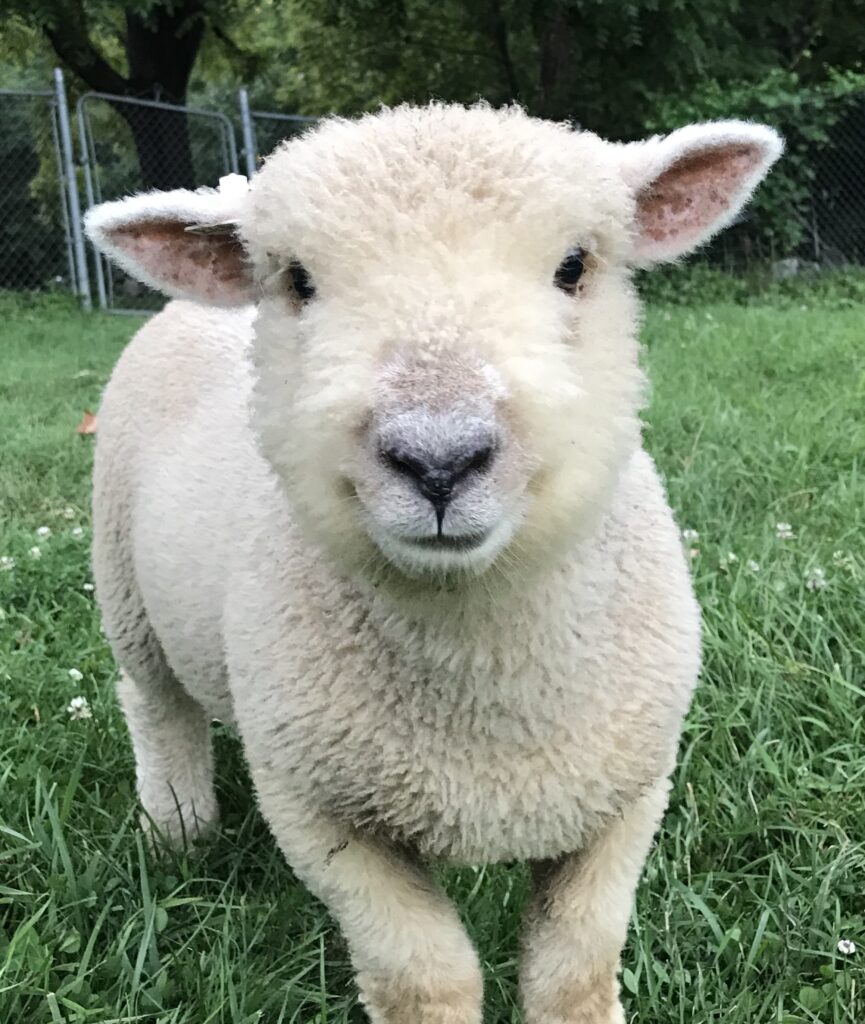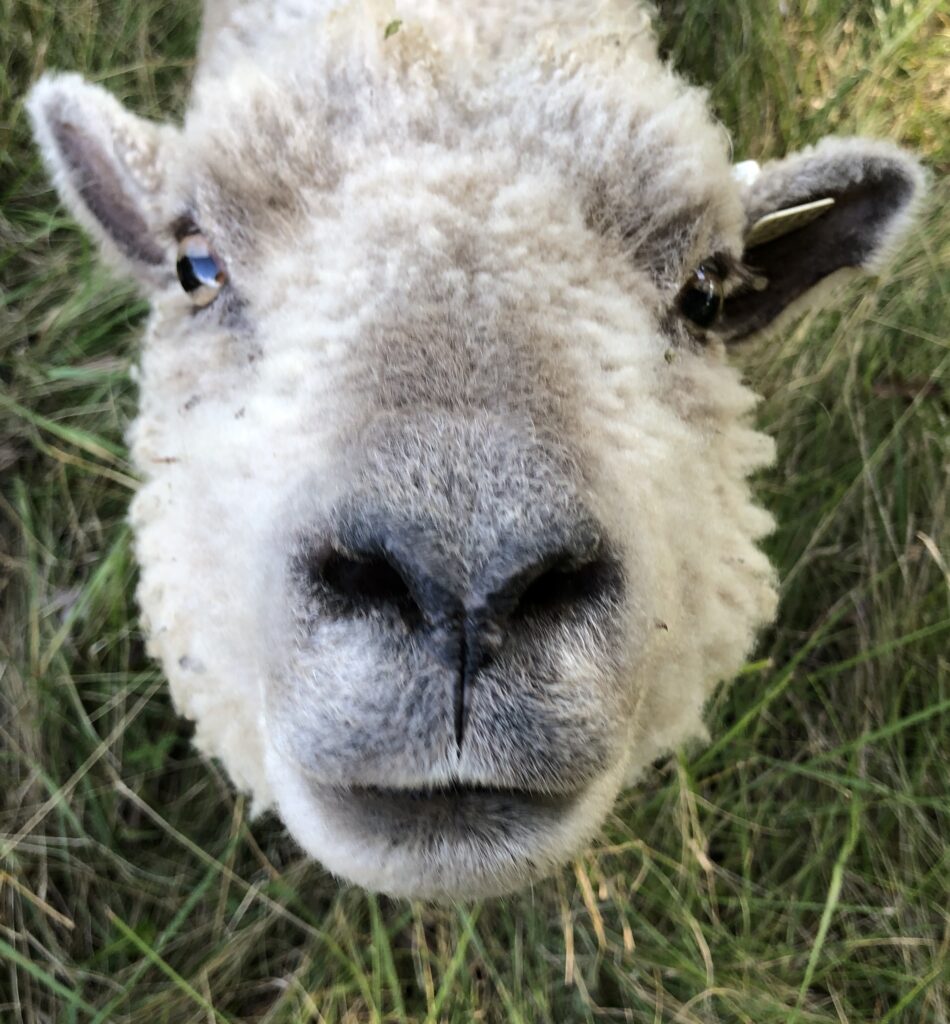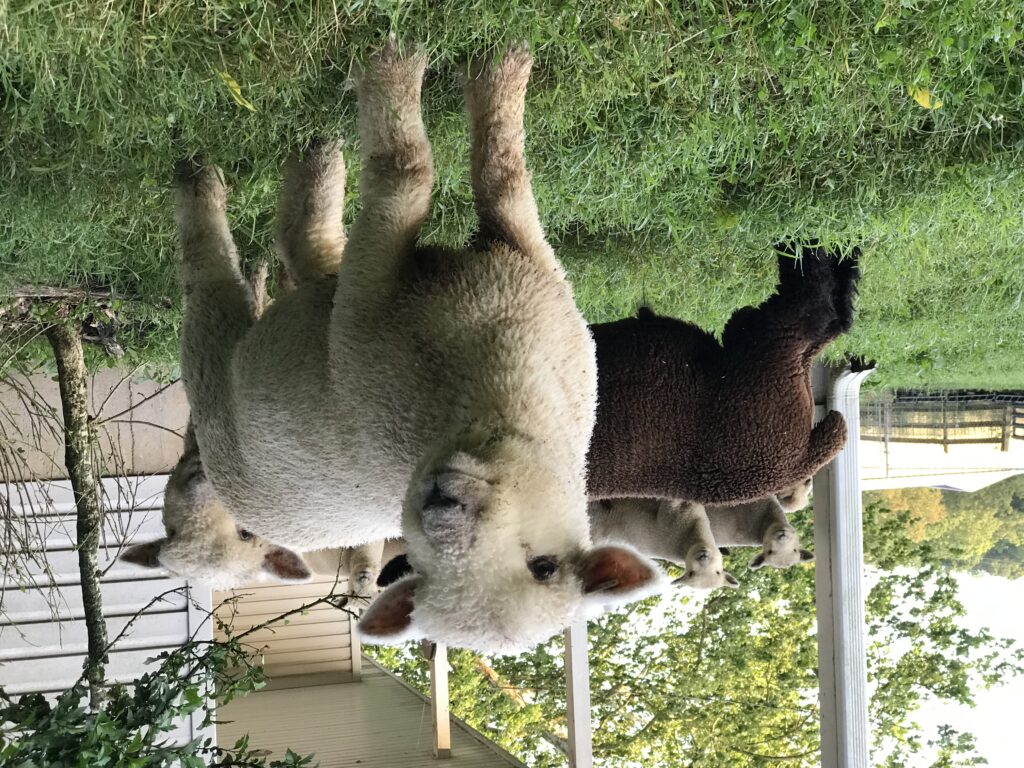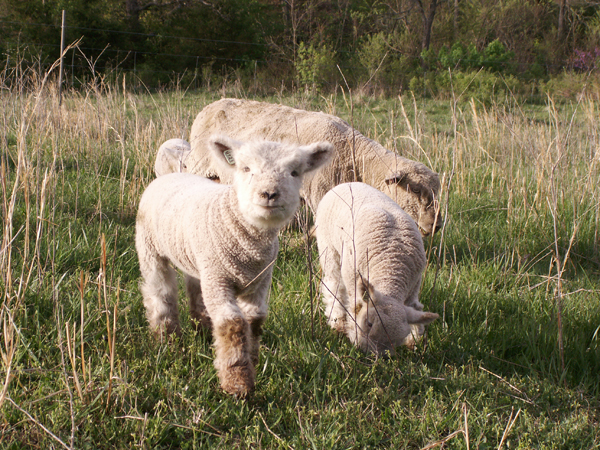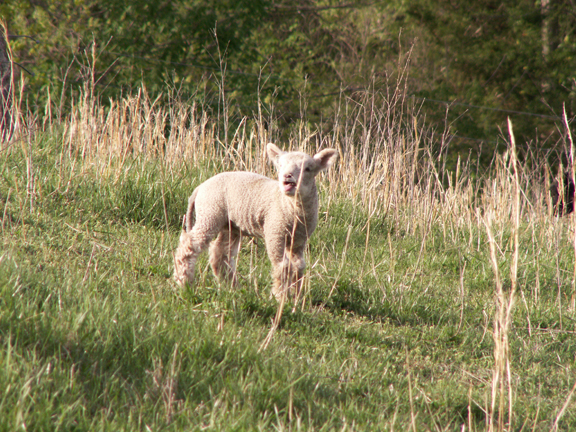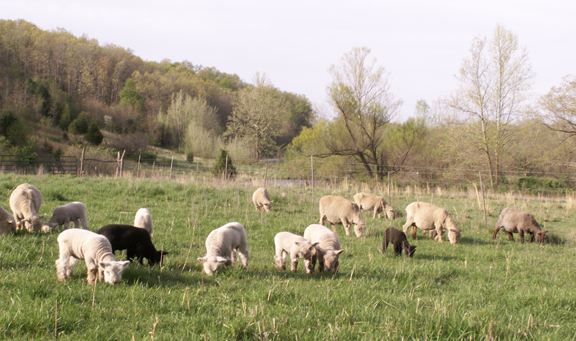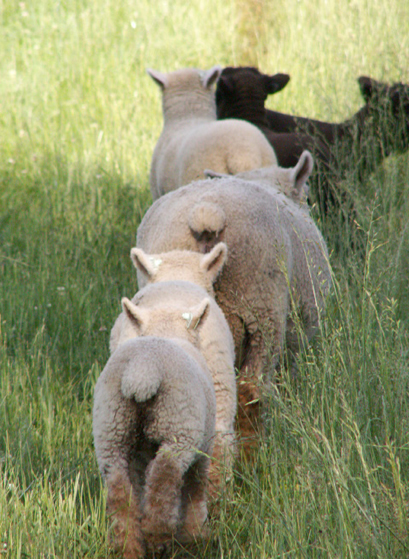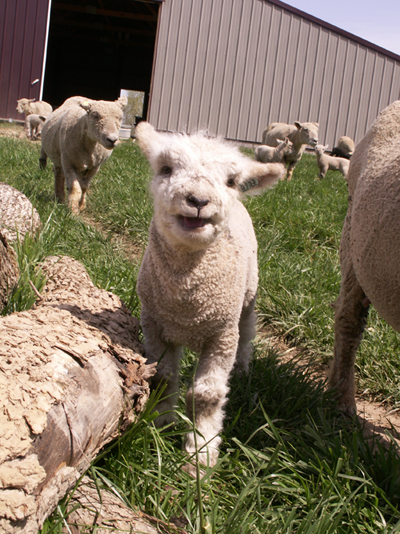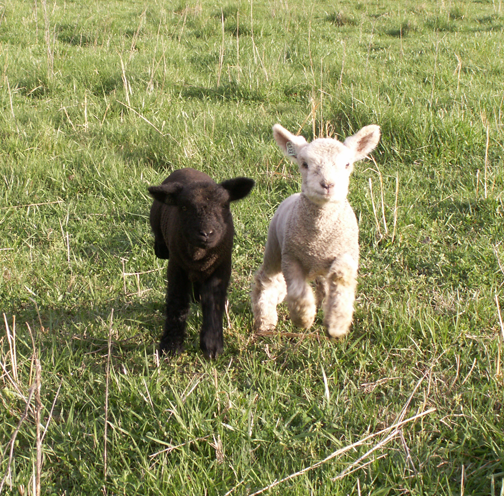***Note: Although I’m not producing lambs any more, I’m going to leave this advice here in hopes it will help as new people start out with these sheep.***
Frequently Asked Questions…and how I’d answer them:
What combination of sheep is best to start with?
The answer depends on what your goals are:
Barnyard Pets If you simply want some sheep to enjoy, help with mowing, to encourage children toward responsibility/teach animal care, or even provide some fiber to “play with” each year, wethers (neutered males) are ideal! Males are typically more confident, so easily become friendly pets with some attention. Their care is consistent and the most simple. Raising wethers is great for “testing the waters” and learning about sheep. If you ever decide to increase your flock, wethers continue to be versatile. They can be housed with ewes, rams, or even lambs. Another nice feature is that they are the least expensive!
If You’re Planning to Produce Lambs Managing a breeding pair (or more) is much more complicated. Here are some of the issues to consider:
- Timing the Ewe’s First Lambing: In my opinion, it is best to not let a ewe get bred till her second fall. That way, she lambs for the first time when she is fully two years old. It takes a Babydoll two full years to mature to adult size. If allowed to be bred her first fall, she will not only need to provide nutrition for her developing lamb or lambs, but also her own still-growing body. She will lamb when she is not adult size herself, inviting complications during delivery. By waiting, the ewe will have a better chance for a long healthy life (probably including more lambs throughout her lifetime).
- Housing/Companions: If you get a breeding pair, who will each live with the first year while being kept separate from each other? Remember that both need a buddy to be well-adjusted and content. Plus, a ram kept alone is a recipe for aggression problems!
- Season for Lambing: Around the middle of August the ram should be separated from the ewe if you’ve kept them together earlier (cooler temperatures and shorter daylight hours trigger breeding season), unless you want lambing to occur in the dead of winter. Lambs often arrive during the night or just before dawn, and all lambs arrive soaking wet. They chill very fast, and if the ground is frozen they can actually freeze to it. Here, I plan for lambing to start in the spring (late March/ early April) so any “surprise lambs” will have a better chance for survival. To do this, the rams are put with the ewes the first or second week of November. This is well past when they would prefer to start their “breeding season”. (Gestation is about 145 days for Babydolls.)
- Plan for the offspring: In my opinion, it is not good to breed closely related sheep (also called “line-breeding” or “in-breeding”) although it is permitted by the registries, and practiced by some breeders. If you choose to keep your flock genetically diverse also, you will not want to breed the ewe lambs to their sire, or the ram lambs to their dam. Any male lambs born, you can make wethers and keep them. But ram and ewe lambs will need to be sold unless you have more sheep unrelated to them for breeding purposes.
Some different ways to get started with a small flock:
- Buy two wethers, and a breeding pair. Until the pair are old enough for breeding, keep one wether with the ewe, and one wether with the ram.
- The first year, buy two ewes. The second year, buy a ram. Let the three live together. This option will cause lambing to happen during the cold part of winter though, unless the ram is bought in the fall when you want breeding to start. If a male lamb is born, you could make him a wether and he could be the companion for the ram from then on.
- The first year, buy two unrelated ewes. The second year, buy two unrelated rams. Keep the ewes housed separately from the rams except during breeding season when they would be paired (also separately). The resulting lambs of this first generation could be sold for unrelated breeding pairs. Any ewe lambs could also be kept and bred to the ram that was not her sire. (This would be the option I’d choose if starting out.)
- Buy a pair of older sheep, and then purchase more unrelated ewe lambs the following spring. If a male is born to the adult pair in the spring, he could be made a wether and be the companion for the ram. The following fall, the older ewe would be moved to the ram and wether, while the younger ewes wait to be introduced till their second fall.
Is registration important?
YES. A very hearty YES!!! Unless you are buying wethers (who can’t reproduce anyway) registration is very important for the future. Non-registered sheep have much lower perceived value, and their offspring will also. They basically become worth their weight in meat.
It is well-worth the cost and effort for registration. I would highly recommend either the Olde English “Babydoll” Southdown Sheep Registry (OEBSSR) and/or the North American Babydoll Southdown Sheep Association and Registry (NABSSAR).
My sheep have been dual-registered with them since I started back in 2005, so both are well-established with a large base of both sheep and members. This is very important when selling your lambs, since customers seek out sheep from these registries. Also, someday when you seek an unrelated ram to bring new genetics to your flock, you will appreciate having the wide variety of options to choose from, allowing you to be much more choosy.
When you are purchasing sheep, it is important to make sure rams and ewes are registered with the same registry. Otherwise you may not be able to register the lambs produced. Spend some time in the two registry websites, and ask them any questions you may have, before buying. Make sure you understand the registration / transferring process, so you know all the paperwork is in order when you pick up your sheep or lambs. Also, make sure the ear tag in the ear of the sheep matches the ear tag number on the paperwork! Both registries are particular about their standards and validation of paperwork. This is for the protection of the breed and the owners of these registered sheep.
You will be SO happy a few years from now if you take the time to learn and plan so you can start out right.
How should I get my lambs home?
Most people use a large dog carrier or crate to transport their lambs inside their vehicle. Most lambs leave here for their new homes in June, when the weather is hot. Being inside, the lambs can stay cool with air conditioning. By laying down a tarp first and putting the dog carrier on top of it, it is very easy to pull out the tarp afterward and have a clean vehicle. I will provide hay for the lambs to lay on in the carrier, and also some for munching during their trip. If your trip is over 5 hours long, you should bring a bowl and jug with water. When you stop for gas or any other reason, you can let them drink while the vehicle is stopped. Then empty the bowl when you resume your trip so the water doesn’t slosh. (If your trip is under 5 hours long, just provide water when you arrive home, and they should be fine.)
If you need to stop to eat, a drive-thru is ideal! You wouldn’t want to allow the vehicle to get hot with them in it.
If you need to transport your lambs in the back of a truck, the carrier needs to provide shade as well as shelter from direct wind. A tarp can be used to help with this if the carrier is a mesh one. The tarp can be laid down, the carrier placed on top, then wrap the tarp around the sides and top of the carrier so only the side facing to the back of the vehicle is open. This provides shade and shelter, good airflow, and keeps the tarp from blowing away. Ties can help keep the tarp from flapping.
You will NOT want to take your lambs out of their carrier until you arrive home. So planning for a trip home without unnecessary stops is wise.
It is good to have a smaller area ready (a pen or smaller fenced area/hay/sheep mineral/water) to place your lambs for the first few days. Then spend a lot of time in the pen with them, sitting at their level if possible. Just let them get to know you. Once they seem comfortable in your presence, they can be let into a larger area. If you plan to feed a handful of grain as a treat each day, it is good to have them come back inside the pen area for that. You will find the routine very helpful for containing them when it comes time to trim hooves, etc. They quickly learn routines involving food, so that can be used to your advantage in managing their care.
Will my lambs be tame? Will they be halter-broke?
Most people pick up their lambs as soon as they’ve been weaned. Up till weaning, the lambs have lived on pasture with their mothers. By nature, lambs are very apprehensive, typically staying behind their mother when unsure about anything. Even the lambs of my most friendly ewes will stay out of reach. This is very normal behavior for a “prey” animal, and to be expected. Over the years, I’ve tried several different methods to “tame” the lambs—catching to pet them, etc. I’ve had the most success with simply leaving the lambs alone as much as possible. I spend a LOT of time among the flock, interacting normally with their mothers, but not forcing interactions with the lambs. It gets them used to having a person near and so they don’t perceive people as “DANGER!”. By the time of weaning, some lambs will be fairly tame and some will still be skittish. But the primary work to get them used to being handled will need to be done by their new owners. (Even the tame ones are apprehensive at first with being handled.) It is not a hard process, and it usually doesn’t take too long. It just takes some patience and the dedication to interact with the lambs some each day.
To tame a lamb or even older sheep: Put about a handful or two of grain (like 16% protein pelleted lamb feed) in a pan and walk away, letting the sheep eat without worry. Then next day do the same, but stay where you can watch. The next day stand a little closer. Eventually, you’ll be able to stand at the pan while the sheep eats. Then hold the grain in your hand, placing your hand flat on the bottom of the pan so the sheep eats from your hand without realizing it. The next day, hold your hand a bit higher. Then eventually get rid of the pan and just have the sheep eat from your hand. Then touch the sheep on the nose with your left hand as it eats from your right….just a touch, nothing more or longer. Once accustomed to that, try touching the side or front of the neck while eating. You get the picture….little tiny baby steps. Remember, your aim is to build trust, nothing more.
Your lamb will not be used to a halter. Since I don’t use halters here, I can’t give much advice on how to go about it either. But my “gut reaction” would be that it would go much easier if you start after the lamb is already very trusting of you and is sometimes following you around already. With halters, remember that they can get hung up on things, so it is important to check on any animal wearing a halter routinely and often.
How should I be prepared for bringing home my first lamb?
- Your lamb needs at least one “buddy”. Sheep are a flock animal and need another sheep for a constant companion. If you are getting a ram, obtaining a wether or an additional ram is a great solution. Rams can develop bad manners especially when kept alone, and from my experience (and the experience of others) well-behaved, polite rams seem to consistently be ones with a constant companion.
- Shelter – a three sided shelter is usually adequate. In the winter, hay or straw bales can be stacked to partially enclose the open side and give extra protection. Keeping sheep closed up in a barn is not a healthy environment for them. I only do that for very short periods of time right after the ewes have given birth when the weather is cold and windy. As soon as I think the lambs can handle it, I open at least one door and use a hog panel across the doorway to keep the sheep inside. (I have not had a case of pneumonia yet, which is a fairly common ailment with newborns and research indicates the risk increases with lack of airflow.) In the summer, sheep need a shady place to lie during the heat of the day. Again, a shed or barn should be able to have great air flow! You will soon discover that they are much more comfortable in cold weather than hot. Their ears can also be susceptible to sunburn if not provided access to shade.
- Grass/Pasture for grazing, or good quality hay (and not old, moldy, or very dusty).
- Loose mineral salt designed for sheep should always be available. Everything your lamb has access to should be evaluated for its level of copper. Feed designed for sheep will have extremely low or no copper in it. Goats, horses, cattle and other livestock will often have copper added to their feeds, minerals, etc. Copper can be toxic to sheep (and builds up over time in the liver), so letting your sheep be around other animals can be a problem if the copper is not managed properly. Loose mineral salt is better than the block type since sheep will bite rather than lick it, and a block will wear down their teeth.
- Fresh clean water should be available at all times.
- Good, predator-proof system for keeping your lamb safe from dogs, coyotes, and others. This can be fencing, a guardian animal (such as a Great Pyrenees dog), or a combination of several things. Having a very secure pen to “put up” your sheep at night (and when you cannot be available) is important, unless you are absolutely sure nothing can get to them. You will find that Predators and Worms (more about them later) will probably be the greatest “enemies”.
I should mention that donkeys are sometimes mentioned for protection from predators, but I would NOT recommend them. I’ve heard numerous stories over the years about donkeys suddenly becoming very aggressive with sheep, kicking, stomping or grabbing and shaking them by the neck. It is a very risky combination.
Optional:
- Lamb “grower” feed. It is also called Lamb Feed or 16% Protein Sheep Feed. Really, any grain formulated for sheep (no copper added) should be fine. You can feed a handful a couple times a day until your lamb is about a year old (a great way to get your relationship off to a good start!). However, if you feel your lamb is becoming overweight, decrease the lamb feed. If your lamb has access to good pasture/grass you may also want to supplement with less feed. (Here, grain is always a very minor percentage of a lamb’s diet.)
- A halter and lead rope. Some people use halters. If you plan to do this, it will go much easier if you train when they are young. Remember that the combination of food, routine, and trust are the key for the easiest training of most animals. I do not halter my sheep because I have quite a few…but I can see some advantages, especially when trimming the hooves of a grown ram. He could be halter-tied to a fence and you could hold the side of his body against the fence with yours while trimming his hooves, letting him remain standing. If this is routinely practiced while he is young, it should make trimming easier later.
What about ongoing care?
- CD&T vaccinations may/should be given yearly. If your adult ewe has been bred, the ideal time to give the yearly vaccination is about 3 weeks before lambing. That way the antibodies from her vaccination will be passed to the lamb through her milk and the lamb will have temporary coverage. (The lamb’s immune system is not fully developed though, so what is passed from the mother is very temporary. The lamb will also need its own vaccinations at the proper ages.) Also, during the lamb’s first year, some people give an additional CD&T vaccination at 6 months, just to ensure coverage in case that particular lamb’s immune system was not fully mature when it was given during the first few months. I have not done this yet, but probably would if mine were fed more grain instead of pasture (“overeating disease” would be more of a risk). I used to also give CD&T vaccinations to my rams yearly, but no longer do that. Since they graze on pasture/hay their risk is very low, and they do not pass immunities on to their lambs. So I’ve decided it is unnecessary to vaccinate my adult rams due to their living conditions here.
- Hoofs should be trimmed at least 3 times a year. If you have several sheep, you will learn which ones seem to need trimming more often, and which ones can go a bit longer. When you get your lamb, examine its hooves, then aim to keep that shape. The more often you do it, the easier the process will be when your lamb is an adult. You will find that hooves are easiest to trim when the ground has been moist for a few days before. When trimming hooves, just trim the outer edges that grow down under the hoof, and just trim them even with the pad. Also, don’t trim the pad. This will keep their hooves healthy. If you ever draw blood, the trimming is too aggressive.
- In the spring, your sheep will need to be shorn. Asking someone else who has sheep in your area, who they use, is probably the best way to start. Shearers make appointments early in the spring, so don’t wait too long–especially if you only have a few and need to arrange to have yours done while the shearer is in the area for someone else. You may also decide to try shearing your sheep yourself (not an easy task!) If you have been working with your sheep on a halter, this will make the procedure much more feasible. You may find that as your lamb’s wool lengthens around its eyes, it may have trouble seeing out. A child’s blunt scissors can be useful for safely trimming a little around the eyes.
- De-worming is not something to take lightly! Worms are a major problem for sheep and can cause a sheep to “suddenly” become very ill and die. In my experience, the most risky time in a sheep’s life is during the first year. All sheep have worms. It is actually a normal condition and contributes to their immune system. But during the lamb’s first year, their immune system is still developing so they need to be monitored closely so the numbers do not get too high. The best thing would be to discuss this with your vet and set up a schedule based on the conditions in your area and your particular situation. When you come to pick up your lamb, I will show you how to check the eyes for overload symptoms of the most problematic type of worm, and you should check the eyes routinely. (If you want to learn more, FAMACHA classes are held in certain areas to teach a whole system based on deworming only when necessary.) Even if you plan to go to the FAMACHA system later, deworming routinely during the lamb’s first year is a good preventative measure. One additional thing I have personally learned, is that nutrition plays an important part in lamb survival if one does get overloaded. Adding grain to the diet for a time afterward is a good idea until you are sure the lamb (or sheep) is again doing great. If your lamb ever starts acting “off”, immediately consider deworming.
Now that you realize how deadly worms can be, especially for a young sheep, I’ll explain a few other things. My adult flock rarely needs deworming, and when needed, it tends to only be 2-3 of them. Most haven’t been dewormed in many years. I’ve learned that a combination of under-stocking the sheep for the amount of pasture they are on, as well as rotating their grazing helps a lot.
What should I know about feeding my sheep?
- A sheep needs a high percentage of roughage (like pasture and/or hay) in its diet for the rumen to function properly.
- Never change the diet of a sheep suddenly. Their digestive systems are very different than ours. Any changes should be done gradually over the course of several days or a week. This includes changing a type of grain, changing hay, changing pasture that has very different plants, and also includes changes in the percentage of the diet. This last item means that even though your sheep have had access to pasture during the winter as well as being fed hay, when spring arrives suddenly they will not be interested in hay if lush green grass is abundant. You will need to limit their access to the grass, or you may find that they will bloat. I handle this by leaving them in their pen with hay to eat until afternoon (while also waiting for the dew to dry on the grass–wet grass is another contributor to bloat) then allow them a little time in the afternoon to graze. I gradually increase their time grazing, until they are spending most of the day doing so.
- Maintain your sheep’s weight properly. After lambs are about 6 months to a year old, grain can be used more as an occasional treat than as a regular part of their diet. If healthy, they should be able to maintain weight well on good hay or pasture. In fact, some will become fat easily on even small amounts of grain. Allowing your sheep to get fat is not doing it a favor. In ewes that are bred, it will cause numerous birthing problems. For all sheep, it causes more problems with their feet, makes it harder for them to exercise, which in turn makes it easier to gain weight, etc. Weight maintenance is something that should be done year-round. However, never put your sheep on a diet to lose weight quickly! Also, they can look very fat, especially in the spring in the evenings after grazing, and yet be too thin. This often happens with lactating ewes (and during pregnancy). Learn to “score” your sheep so you know what is really going on under those fluffy coats. There are several sites on the internet with pictures to illustrate how to do it. But the basics are that you lay your hand flat on the sheep’s back at the hip area. You should feel the spine. Now feel the flesh on either side of the spine. It may dip down very slightly on both sides if the sheep is in good condition. If the flesh drops down significantly, the sheep is too thin. If you are having trouble feeling the spine through a layer of fat, your sheep is too fat. If you have a sheep losing weight even though it seems the diet is fine, it is probably time to deworm again.
What about the floor of their shelter and bedding?
-
Flooring Personally, I like dirt the best. By raking it each day, the task takes very little time, and flies stay minimal. The dirt will harden which makes it easier and easier to rake and keep clean. Another key is to keep good ventilation. If you make a manure pile with what you rake up each day, you’ll have wonderful compost/fertilizer for your gardens!
-
Bedding The only time I use bedding is in pens for the ewe and her lambs after they are born. I put hay down to give the lambs warm bedding, then feed the ewe her hay in a corner. She distributes around what she doesn’t eat. I use a shovel to clean out manure a couple times a day (the pellets roll into it). By the time the little family is moved out to pasture about a week later, the hay is several inches thick. I use a pitch fork and rake to clean it down to the dirt again, then let it air out before moving another new family in (usually several days later). This old bedding is great mulch in a garden! The key to keeping everything sweet smelling is to clean out the bedding as soon as possible—before it gets too old/moldy.
What are some ways I can learn more?
- Internet Groups There are some Facebook groups dedicated to Babydoll owners from across North America. They can be extremely valuable because of the combined experience pooled together, and are usually helpful and supportive. (However, keep in mind there are sometimes individuals ready to give a lot of advice although they don’t have much actual experience.) Just use common sense, and the groups can be a good resource.
- Books There are many well-written books aimed at the new shepherd. Visiting your local library should get you started. “Storey’s Guide to Raising Sheep” is good and fairly easy to locate. If you are desiring information beyond the basics, I would highly recommend Laura Lawson’s books. “Managing your Ewe” is a good one to start with and includes a lot of information about lambs also. One thing I should mention about books though–most are aimed for the owners of meat sheep with large flocks whose primary goal is profit. It is rare for those sheep to be kept past age 7 so they are pushed toward fast production (quick weight gain). Their long-term health is not a priority since they are typically culled for any issue. That is a very different situation than someone who owns a few sheep primarily as barnyard pets, wanting healthy sheep with good vigor and longevity. So we care for our sheep more as we would for a family dog, paying attention to proper diet and health maintenance. But those books have much information that is applicable to sheep in both situations.
- Internet Usually great for getting information as specific or general as you want, when you want it. One example is a Sheep Home-Study Course that is offered, and its lessons are available here: Home Study Other good resources are: Sheep 101 and Sheep 102
Next: Lambs for Sale?
